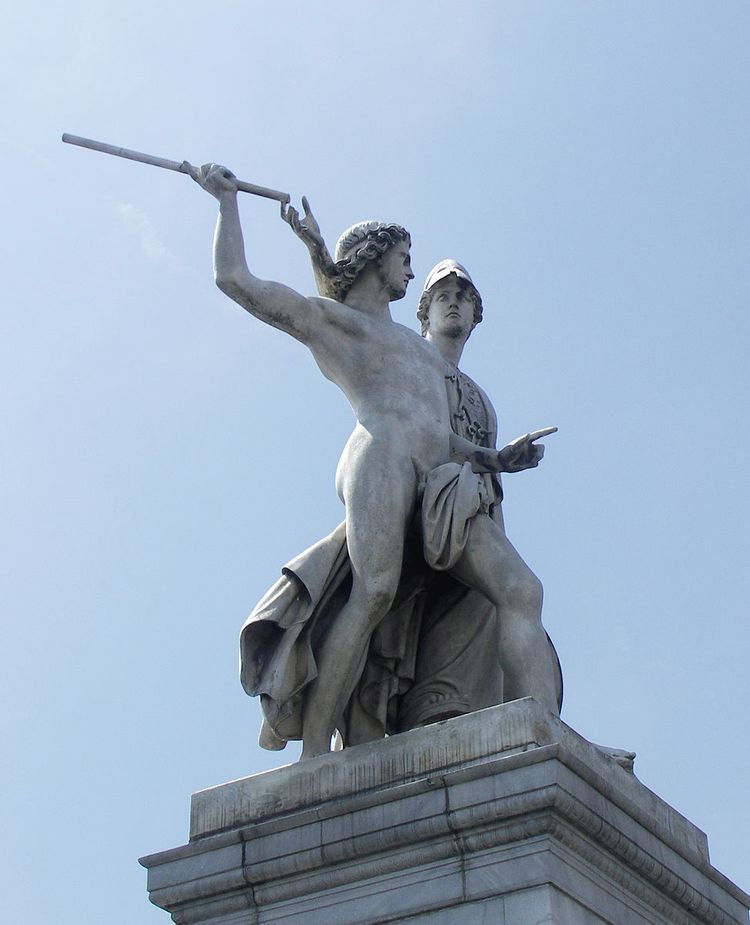Name Hermann Schievelbein | ||
 | ||
Friedrich Anton Hermann Schievelbein (18 November 1817 – 6 May 1867) was a German sculptor.
Contents
Life
He was the son of a master carpenter and lost his parents early, growing up in the home of an older sister. His artistic education began with the landscape painter Carl Friedrich Trautmann (1804-1875). Afterwards, he attended the Prussian Academy of Art from 1835 to 1838, where he studied with the sculptor Ludwig Wilhelm Wichmann. After graduating, he spent three years in Saint Petersburg, helping to decorate Saint Isaac's Cathedral and the Winter Palace.
Two years later, he received the "Großen Staatspreis" for a figure of Merope about to kill her son Aepytus. The prize included a stipend that enabled him to travel in Italy. He broke off the trip in 1844 and returned early, having received a commission for a figure on the Schloßbrücke (Castle Bridge) in Berlin-Mitte. In 1860, he was appointed a professor at the academy, and became a member of its governing senate in 1866. In addition to his large-scale works, he also created sculptural decorations at the terra cotta factory of Ernst March.
A persistent chest ailment forced him to take frequent curative trips to the south. He died of pleurisy, aged only fifty.
